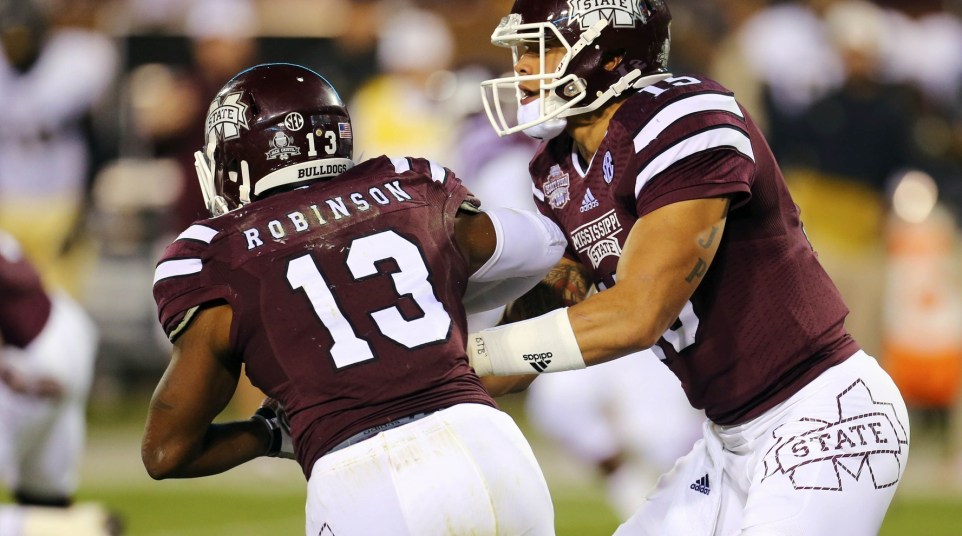What to make of Josh Robinson's season
Mississippi State’s fantastic season didn’t end the with a shot at the playoffs. It was still a huge success, the first 10-win regular season in school history, but the way it ended left plenty of questions. Among them: is Josh Robinson a star, or a product of a potent offensive system?
Robinson, a 5-foot-9, self-described “bowling ball,” is clearly a talent. He came up with huge performances in Mississippi State’s big wins early in the season, putting himself on the national radar after coming into the season as an afterthought. The junior tailed off big time down the stretch, though, part and parcel with the Bulldogs offense struggling.
After 887 yards through seven games, Robinson managed just 241 yards in Mississippi State’s final five games. The in his season, unfortunately, began right when everyone starting recognizing just how well Robinson had been playing.
The offense went from averaging 37 points in the first seven games to 30 points in the final five, although that number is buoyed by blowouts over UT-Martin and Vanderbilt. Robinson averaged 126.7 yards per game in the hot start and just 48.2 in the stretch run.
The question early in the season was how much of Robinson’s success stemmed from that of Heisman-candidate quarterback Dak Prescott? Right when Robinson’s production began to falter, Prescott’s did as well. The quarterback, who finished the season as the SEC’s eighth-leading rusher, averaged just 3 yards per carry in the final five games. With the way Dan Mullen used Prescott, often as the team’s first running option, it felt like Robinson’s struggles came directly as a result of Prescott’s.
Teams began gearing up to stop Mississippi State’s running attack toward the end of the season, and Prescott was often unable to beat them with his arm. That closed up the running lanes that Robinson was rolling through early in the year and gummed up a once-unstoppable attack.
It’s no secret that having a running quarterback makes life easier on a running back. With a dangerous runner behind center, teams can’t train all of their focus on the running back. That’s one of the big reasons why an Auburn rusher has led the SEC for the last two seasons: Nick Marshall is just as dangerous as his tailbacks have been. The same goes for the Prescott-Robinson dynamic.
Does that mean Robinson isn’t good on his own? Not in the least. While he didn’t have a ton of opportunities in his first two seasons, Robinson averaged 6.1 and 5.9 yards per carry, respectively, in his freshman and sophomore years. He topped that this year at 6.4 yards per carry, despite having more carries than his first two seasons combined.
Mississippi State fans might never have to find out if Robinson can prosper without Prescott. The way the quarterback struggled through the air late in the season likely showed scouts he’s not ready for the pros, so both could be back for their senior seasons. With a year of a full workload under his belt, Robinson will be ready for the rigors and pressure that come with being a top back in the SEC.

